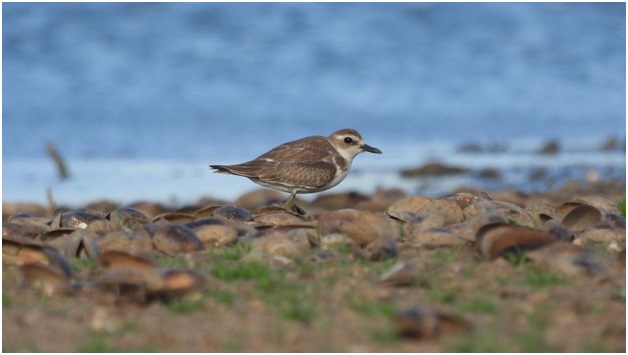Greater sand-plover (The Hindu)

- 02 Oct 2023
Why in the News?
A Greater sand-plover (Charadrius leschenaultii), typically found along seashores, was recently observed in an urban reservoir within Coimbatore.
About Greater Sand-Plover:
- Known for its impressive long-distance migrations.
- Physical Characteristics:
- A medium-sized plover featuring a lengthy and robust bill.
- Breeding adults display a dark mask and an orange chest, neck, and forehead, with females being somewhat less vibrant than males.
- Non-breeding birds and juveniles exhibit sandy brown plumage on top and white underneath, including a white throat and 'eyebrows.'
- Notably, unlike some Lesser Sand-Plovers, the Greater Sand-Plover never sports a black boundary around the throat.
- Breeding habitat includes high-elevation regions, favoring arid, open environments, often near water sources.
- During winters, it can be found along coastal mudflats and estuaries.
- Breeding season typically spans from April to May in central Asia, late March to late May in Turkey, and up to late June in Armenia.
- During the non-breeding season, it migrates to the shores of the Indian and Australian Oceans.
- The bird sustains itself on a diet comprising beetles, worms, crustaceans, mollusks, other insects, and their larvae.
- Preferred Habitat: Mudflats and sandy shores.
- Behavior/Ecology: Tends to associate with other shorebirds, particularly the Lesser Sand Plover.
- Conservation Status: IUCN: Least Concern
